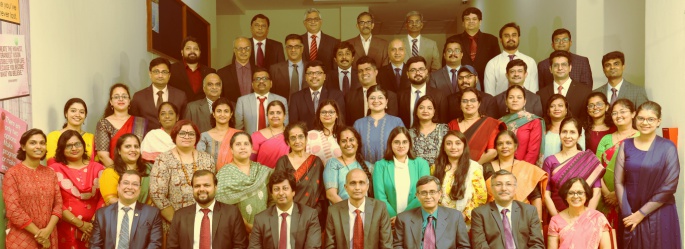B-Schools Need To Embrace Technology To Churn Out Technologically Agile Workforce
Date – 22.06.2021
Publication– BW Businessworld
Page view: 2,151,390
Author: Ritu Gupta
Digital transformation is more about selecting and implementing the right technology product for the organization rather than building it. Technology products are growing as a multi-billion dollar industry and several companies are developing and customizing these products as per the client requirement. Hence, the worry is not to develop but to adapt and optimize its use within the organization. It has been shown that digital technologies provide possibilities for efficiency gains and customer intimacy. Therefore, digital transformation is not optional anymore.
Digital transformation is creating new business models, changing value streams, and provoking faster, more disruptive change than ever before. Why? Because it is digital. Digital business is now present in our everyday lives, from grocery shopping to bank transactions. It is everywhere, creating value and improving experiences. For example, digital transformation has been pivotal in coping with the current pandemic as people could not venture out for any utilities and all service providing websites helped consumers even for health care consultation. If an organization failed to transcend through this, they were left behind. A study in 2019 pointed out that Digital Transformation was one of the key issue’s CEOs struggled with.
This calls for the need to blend continuous improvement methods with nowadays ‘digital enablers’.
Who are these digital enablers? As per McKinsey’s report, successful implementation of digital transformation includes management teams crucial role in leading change, making information transparent and more accessible, getting employees and managers on board, getting the collaboration from teams across organizations, creating standard operating procedures, encouragement from top management to experiment, be creative, and challenge old ways of working. Unfortunately, many organizations seeking transformation (digital and otherwise) bring in consultants who tend to apply one-size-fits-all solutions in the name of “best practices.” More often than not, that leads to resistance from employees. Moreover, the organization should try to drive the change internally. Another reason, which leads to failure of transformation is if employees feel threatened by job loss. It is an important area for leaders to address to make the employees understand the possibilities that will arise from upgradation rather than fearing job loss. Start-ups are known for their agile decision making, rapid prototyping and flat structures. Similarly, the process of digital transformation is inherently uncertain: full of continuous changes, quick decisions, and collaboration across the organization.
Suppose business schools do not ensure that the students understand business needs and transform them digitally accordingly. In that case, they will not be able to take their respective organizations to the next level.
As mentioned above, a successful organization-wide digital transformation involves managing employees, organization design, change management, and this is where business school graduates come into the picture. Other keys to ensuring this area align with business strategy, leverage insiders, design a fantastic customer experience from the outside in, and be agile as a start-up, changing as per the requirement of the market. At each stage, a person who can steer the initiative whilst understanding the business need is required, and they are the digital enablers. Management graduates can undertake all these activities. However, the management graduates cannot shy away from understanding technology either. They must lead the technology organizations; hence they also have to show they know what they are talking about.
A good leader, who can manage change and understands technology, like a marriage of management and technology, is crucial. Moreover, business schools have to impart the skill to their graduate students to succeed in this agile environment driven by technology.
We live in the VUCA environment, where digital nativity is seen as a precursor to performing. In such a world, if we do not help our students be technologically agile, they will not contribute to the business needs. Therefore, the focus should be on changing the mindset of its members and the organizational culture and processes before they decide what digital tools to use and how to use them, what the members envision as the organization’s future drove the technology, not the other way around.




